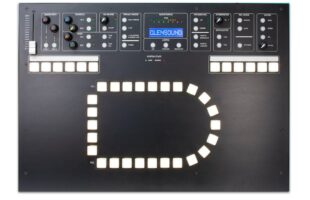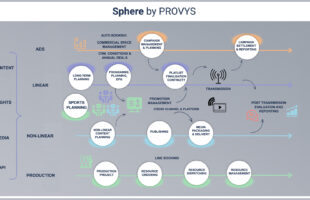A myriad number of reasons stalling HD services have been variously given over the past few years – including low consumer interest, low penetration and high cost of HD-ready sets, and the high cost of HD set-top-boxes. But lack of substantial HDTV content was viewed as the most significant roadblock for HDTV in the region. According to a recent survey of the region’s pay-TV operators, the roll-out of more High Definition (HD) Television services will be very much driven by new players entering the pay-TV arena. 75 percent of platforms surveyed have, or plan to launch an HD offering by end 2008, according to research firm Euroconsult. While the ‘by end-2008’ timeline may seem ambitious, the message from operators surveyed was overwhelmingly optimistic regarding HD. Of the 25 platforms interviewed by Euroconsult, nine already provide HDTV channels or VOD content and another 10 are committed to HDTV plans. The study said that HDTV is spearheaded by newer pay-TV platforms seeking to differentiate themselves. More established platforms were taking a slower approach to implementing HDTV. The study was commissioned by MEASAT Satellite Systems Sdn. Bhd. (MEASAT) which is striving to make its newest launch MEASAT 3, synonymous with HD. Said Paul Brown-Kenyon, chief operating officer of MEASAT. “The insights will help us determine how best we can support our customers and partners in the development this important segment.” “The study provides clear evidence of faster development of HD offerings in Asia than previously expected. Opportunity for growth and increasing competitive pressure are the primary factors driving pay-TV broadcasters to develop an HD offer” said Euroconsult’s managing director Pacome Revillon. Updates from around the region include Southeast Asia’s first terrestrial general entertainment (GE) channel, MediaCorp’s HD5 – which launched commercially in Singapore on November 11, 2007. A simulcast of Channel 5, MediaCorp TV’s English channel, was initially available on SingTel’s mioTV service. While much of the programming is being up-converted to HD format, at least 30 percent of HD5’s content during primetime is in native HD format. Acquired shows include Heroes, CSI Miami, Supernatural and Smallville. Local English-language productions include Lifestory 2, Makansutra and Lifeline 2. Movies include Fantastic Four, X2: X-Men United and the Lord of the Rings trilogy. From July 28, 2008, StarHub Digital Cable customers also gained access to MediaCorp’s HD5 at no extra cost to all customers with an HD-ready TV set and StarHub’s HD set-top box. And from August 14, StarHub Digital Cable’s sports group customers with a HD set-top box became able to enjoy Sports HD at no additional subscription cost. Sports HD will air 92 Barclays Premier League matches for the new 2008/09 season and weekly US PGA Tour events in high definition. StarHub has made clear its intentions to offer five full HD channels by the end of 2008. These include the platform’s HD pioneers since February 2007, Discovery HD and National Geographic HD; newest additions HD5 and Sports HD, with History HD expected to become the fifth. Discovery Networks Asia-Pacific has announced it will launch its first high definition simulcast service for Discovery Channel in Japan this October. The channel – Discovery Channel Hi Vision – will be a high definition simulcast of Discovery Channel’s standard definition service which is currently available in 6.2 million homes, and will replace the existing Discovery HD service. The existing Discovery HD service has received significant support from viewers as Japan’s first documentary channel in full-scale high definition picture since the channel was launched in December 2005. To attain a higher level of viewer satisfaction, Discovery Japan is transforming it into Discovery Channel Hi-Vision. This is Discovery’s first high-definition simulcast launch outside the US, and is also the first documentary channel in Japan to offer a high-definition simulcast. On a pan-regional level, Hong Kong-based STAR Group will be launching two HD channels in 2009, leveraging the group’s Chinese-language library and STAR Movies brand to do so. STAR chief operating officer Laureen Ong told Television Asia Plus that apart from the two new HD channels, a number of other new developments are on the horizon including a brand revamp for English-language GE channel STAR World. Ong says to expect increasing content synergies between STAR Taiwan and mainland China; and in India, four new regional language channels and new shows for Hindi GE channel STAR Plus. In Hong Kong, TVB and ATV are simulcasting in digital format their four existing TV channels, Cantonese channels TVB Jade and ATV Home, as well as English channels TVB Pearl and ATV World, and have launched new free SD and HD channels. Both will continue to broadcast the four analogue channels to allow viewers to switch to digital broadcasting at their own pace. TVB’s general manager – broadcasting Cheong Shin Keong observed that the promise of new digital SD and HD channels has been a key driver of digital TV adoption, and believes that TVB is well positioned to fulfill that promise with much of its self-produced content already made in native HD, and the remainder being upconverted. TVB’s newly-launched HD Jade channel mirrors primetime shows on TVB Jade, and offers acquired HD shows and TVB Pearl’s English programming during the shoulder-prime period, as well as consumer-targeted financial show Money Smart during the fringe periods. HD Jade also converted to a 24-hour dedicated Olympics channel during the games to air Olympics related-programming and live HD coverage throughout the event. “According to our estimates, TVB’s channels win about 70 percent of channel share during primetime on weekdays, hence HD Jade will make the greatest impact by providing the content which already airs on our analogue channels,” explained Cheong. Citing the lack of spectrum as the main inhibiting factor, Cheong revealed that TVB will not launch more HD channels in the immediate future. On the other hand, ATV rolled out four digital SD channels including inhouse produced News & Business Channel, male-targeted His Channel and female-targeted Her Channel, culture-focused Plus Channel and 24-hour CCTV 4 Channel, along with the ATV HDTV channel. ATV currently broadcasts at least two hours of HD programming daily on the HDTV channel and will increase its HD offerings across various genres. HD debuted on now TV in July 2007 with the commencement of 90 Barclay Premier League matches to be aired in HD on now SPORTS HD channel, which also features Italian Serie A, Stanley Cup and will broadcast the upcoming UEFA European Football Championships in June 2008. VOOM HD was added in July, while HD documentary channels National Geographic Channel HD and Discovery HD were introduced in December 2007. now TV’s Dominic Leung, managing director, television & content, PCCW observed, “While awareness of DTT broadcast has increased significantly, it has caused some consumer confusion with the varying standards and quality of DTT receiver boxes available in the market.” now TV launched a hybrid all-in-one STB that receives now TV’s SD and HD channels as well as DTT SD and HD channels. On offering HD channels, Benjamin Tong, executive director – Hong Kong Cable and i-CABLE WebServe Ltd noted that i-CABLE is capable of supporting HD broadcast. “We are currently upgrading various aspects of our infrastructure and will roll out new generation STBs before the end of 2008 for the introduction of new services including HD and interactive. However, at this stage, we do not have a precise timetable for the introduction of HD programmes, the timing of which will depend on market acceptance.” Meanwhile in India, HDTV is yet to gain traction in that market, although both public and private pay-TV operators are gearing up for the same. From a broadcaster’s perspective, some players are technology savvy and are ready to embrace HDTV. For instance, Mumbai-based INX News Pvt Ltd recently launched its 24-hour English news channel NewsX, which has been described as India’s first HDTV-ready news channel. It also claims to be the first news channel in the Asia Pacific region to use high definition cameras, offering viewers better looking footage with sharper image quality. For its part, public broadcaster Prasar Bharati is targeting coverage of the Commonwealth Games in HDTV format in major cities in India. The Games are scheduled to place in New Delhi in 2010. In the outlay proposed in the 11th Five Year Plan (2007-12) for the Information and Broadcasting sector in India, a US$110 million budget was ear-marked for development of HDTV. The authorities considered the need for adopting a cut off date for end of all analogue transmissions and full conversion to digital transmission. Discussions stressed that in the Indian economic context where TV sets are still basic in nature, analogue transmission may have to continue even beyond the cut off-date of 2017. India’s first private DTH operator Dish TV has indicated that its DTH equipment is HDTV ready and it plans to sell HDTV set-top boxes this year. Among other access technologies, IPTV, also in its nascent stages, is expected to result in the introduction of HDTV soon. For instance, when Reliance Communications announced its partnership with Microsoft for Microsoft Mediaroom IPTV software platform in November last year, Reliance had stated that consumers will be able to watch popular standard definition (SD) content as well as high definition (HD) content – for the first time in India. The service may get launched by the end of 2008. Explains Ong Hee Yah, managing director of MediaCorp’s HD arm Caldecott Productions International, “HD will sooner or later be the default standard in broadcast. In Asia, Japan is obviously at the forefront of it with Korea and China tailing behind but nonetheless, catching on. For the rest of South East Asia, it will take a while as cost is still an issue for many traditional broadcasters. But as HD content becomes more readily available and consumer awareness grows, the market will correspondingly improve.” “There is still a shortage of HD content to feed dedicated HD channels in the region. One would need at least 400-600 hours for a full-fledged HD channel. Depending on the quality, this shortfall could probably be addressed in the next 2-3 years,” Ong says.
Ad – Before Content
Related Articles
Keshet International sells Tuesday’s Child TV’s The Hit List to M6 Groupe in France
Glensound Debuts European Parliamentary Broadcast System at ISE 2025
- PROVYS Technologies Reports an Active and Successful 2024
Screenshot
ZEE5 Global announces the World Digital Premiere of The Sabarmati Report
CBC announces Ioanna Roumeliotis as new host o THE FIFTH ESTATE
- Season Two of HBO Original drama series The Last of Us debuts in April
Courtesy of HBO








